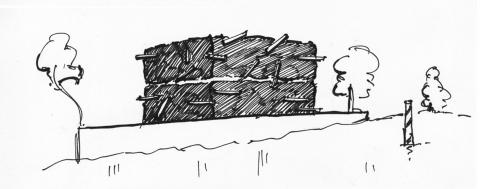Letter from Sydney: Thoughts on The National at Carriageworks
Sydney… I step off the plane and start sweating… I walk down the street, the bats are already circling overhead at 3pm (I text a friend in Melbourne, ‘how romantic she says’), the junkies are already circling underfoot. I cross the road to avoid the haranguing and frighteningly large crazy guy, buses everywhere, noisy, dirty, loud, funky and smelly: the Sydney fug… Everyone is badly dressed in that particularly Sydney style: too much colour, too much active wear, too much blond. You could never get away with that in cool, grey Melbourne.
I walk from Central Station to Carriageworks, through the backstreets of Redfern, the tension between its recent gentrification and long Aboriginal history undeniably palpable in a way that you won’t feel in central Melbourne, where a cloak of invisibility covers any Indigenous presence. Entering Carriageworks we are back to the de rigueur plain black in the form of the uniformed staff, but you know from the moment you walk under Archie Moore’s fabulatory Indigenous flags hung overhead—both colourfully joyful and assertively political—and walk past the remnant circle of glitter (perhaps one of the more obvious works in the show) that this is not going to be a constrained Melbournian museum aesthetic. If similar large government funded galleries in Melbourne (and, it must be said, many of the upper echelon of artist-run spaces that have muscled their way into the scene as an unofficial second layer of respectable conceptual art) have a tendency or anxiety to assert their serious nature through the continued reproduction of a carefully constructed dour aesthetic drawn from 1960-70’s East-Coast conceptualism, there seems to be something else at play here in Sydney. That is, if Melbourne has a tendency to disappear up its orifice of choice, to repress and contain any exuberance under a veil of research and theory, here Sydney art demonstrates a very different relationship to its sphincters, which are generously relaxed, abundantly multiplied and joyfully displayed. And in this joy and excess there is a different kind of politics that comes through, one that asserts the political efficacy of the aesthetic rather than art as a representation of thinking.
Of course most of the artists in the show are not, in one way or another ‘from’ Sydney, so it is a curatorial push here that has uncovered and collected these minor threads within Australian art, including those misshapen and lumpen protuberances lying awkwardly under the grey blanket of the Melbourne art scene. I really can’t imagine a major exhibition of Australian art in Melbourne that could be this colourfully loud (unless it is a show ‘about’ colour, e.g. the NGV’s Who’s Afraid of Colour, though even this was relatively restrained) and materially pleasurable. Instead down here we get served the increasingly meagre and dry returns of the ‘New’ series at ACCA, the earnest conceptualism of MUMA, the populism of the NGV, and the rigidly adhered-to ‘look what I researched in my PhD’ art of the major ARI’s. Perhaps the current TextaQueen show at MPRG may begin to break this mold, we can only hope. Of course in The National, which spills across three major galleries, Melbourne flavours still get an outing (Helen Johnson’s and Emily Floyd’s work for example), but at Carriageworks these aesthetics take a back seat for once.
Even comparing the Carriageworks’ room of Ramesh Mario Nithiyendran’s always wonderfully exuberant ceramics (with their decidedly friendly attitude towards orifices), with his recent work at Melbourne’s Ian Potter Museum, makes evident the difference in tastes. If in Melbourne these works had to push against the blandness of the well-lit, reasonably spaced and overly calm nature of the Melbourne venue, here in Sydney they spill out wildly—towering over us in cracked glory resonating with the distressed industrial surrounds as they reach to the ceiling, pulsing with the coloured light-ropes that are their only illumination, crowding together and crowding out the viewer.
Beyond this work lies a small room occupied by a killer animation of Richard Lewer’s that makes undeniably evident (in an entirely good way) the beating political heart of the show. Lewer’s work, using a gut-wrenching first-person narration by Mavis Pat recounting her son John’s death in custody, encompasses well-pitched wonky animation with slides of photographic material from the real lives of the characters, alongside images of the artist projecting these slides. Thus the work manages to be conceptually strong and make evident the complexity of the relations between artist, artistic practice, narration, black and white Australia, drawing and reportage in a way that is convincing on both political and formal registers.
In the next large room a few pieces stand out amongst many strong works: Karla Dickens’ black painted improvised steel ‘shields’ (such as garbage can lids) harness a powerful and righteous anger, and Richard Bell, as always, speaks with both this power and a sense of humour. Alan Griffiths presents the standout work: a series of playful wool and ochre-covered wood constructions and accompanying video that meld traditions of Griffiths’ history as a lawman with contemporary performativity in a manner that shows Indigenous cultures (in the plural) to be vital, contemporary and aesthetically rich. I’m struck again in this room by both the ability of the artists and curators to position such a range of urgent political messages without compromising aesthetic complexity, and wish I could see more of this in Australian galleries in general.
Amongst such powerfully political work that is capable of harnessing the aesthetic as an ethical technics, Chris Bond’s playfully—but conceptually and politically light—books suffer. Bond’s work, at home and welcome in other contexts as it is, looks arch and narrowly reflexive in a room full of bold and powerful formal statements and lively politics, of which Griffiths’ powerful, performative and decolonizing project is the standout. Jess Johnson and Simon Ward’s collaborative animation, in spite (or because of) its technical dexterity, loses some of the queer immediacy of Johnson’s original drawings, particularly when seen against Lewer’s animation which maintains, and even enhances, the insistent singularity of the artist’s drawing practice.
Heath Franco’s work provides a terminus for the show—as usual it has a goonish, irritating and base quality like the best of Paul McCarthy’s work, but here that energy harnesses an urgency that we might read as a much-needed post-Trump attack on the iconography of the USA. Sit through the whole work—it rewards the time, and as you have to then retrace your steps to exit the building, it provides an interesting reframing of the other works, the position of ‘new’ Australian art, and politics in art, in the context of so much global idiocy (as Lorange and Brooks write in this magazine about The National as a whole, the work articulates within the concept of the national ‘the anti-national, the pre-national, the post-national’).
On my way out I discover, tucked in next to the information desk, Agatha Gothe-Snape’s quiet and disquieting but funny-angry video essay. It brilliantly sums up the show as whole when she gently rails against, I think, the bland and constrictive notions of contemporary art that still seem to have currency in Melbourne. To paraphrase her work (paraphrasing Robert Hughes), ‘thank god we no longer need to believe that unpainted plywood constructions and videos of men pricking themselves with pins are the sum of contemporary artistic expression’. Hallelujah to this I say!
As I leave Carriageworks a Sydney dog leaps off the edge of the outside retaining wall into the void (seemingly to his death, though after much agonized howling he gets up and limps off on three legs). Would a Melbourne dog ever attempt such a feat of absurd exuberance and daring? No, he would be home quietly working on his PhD, waiting for his funding to come through, collecting his scholarship money and scraps of plywood for his next show. He would very sensibly take the stairs one at a time…

-itok=Fo_oDcvR.jpg)
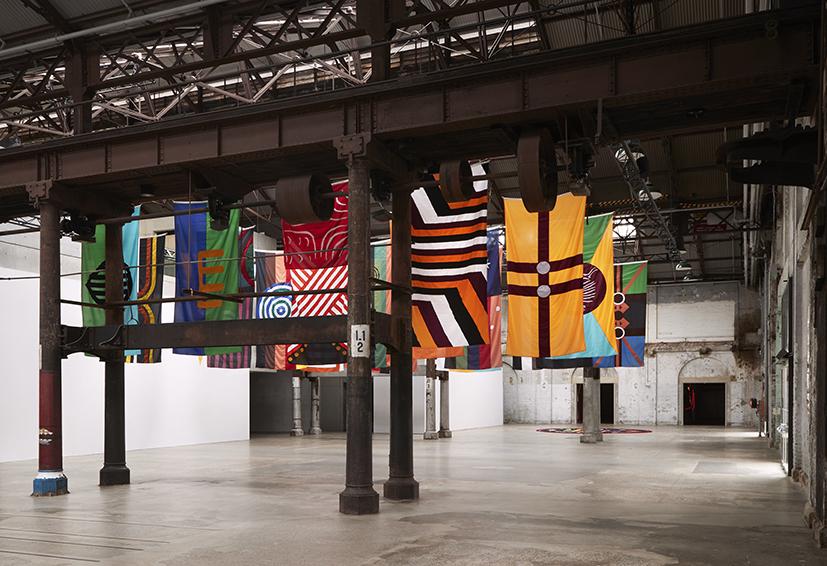
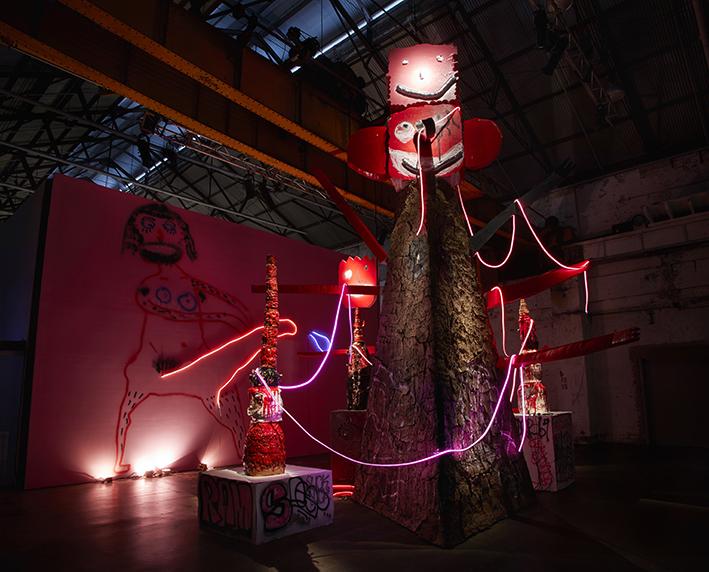
-itok=gO1QbX9M.jpg)
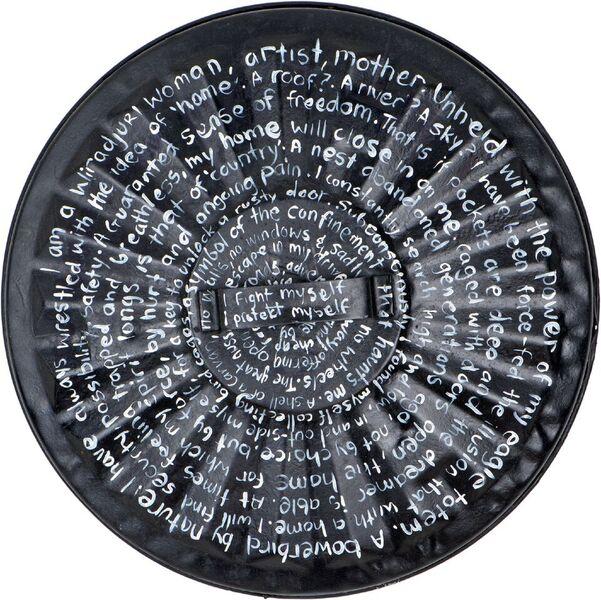
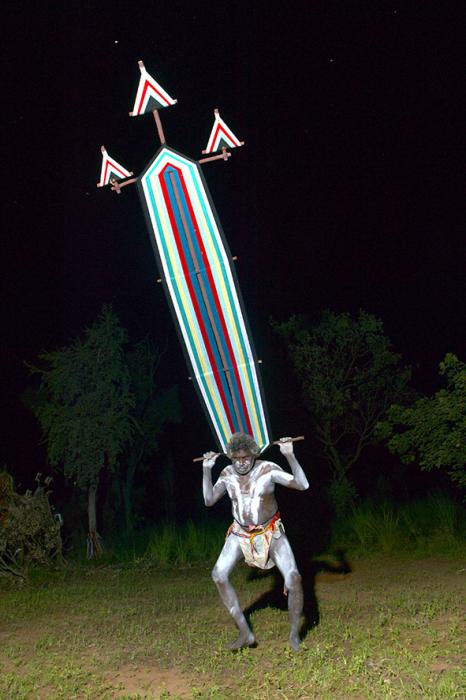
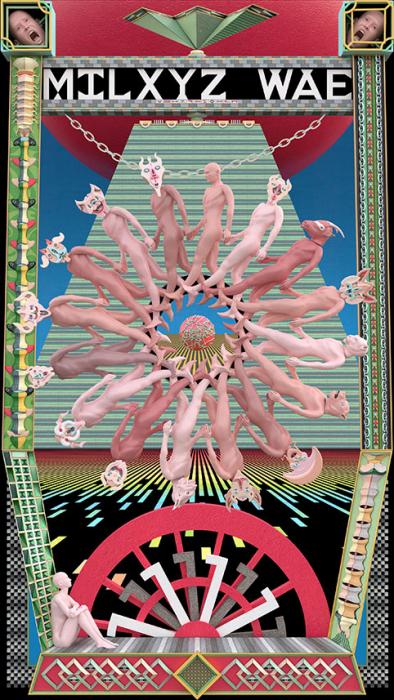
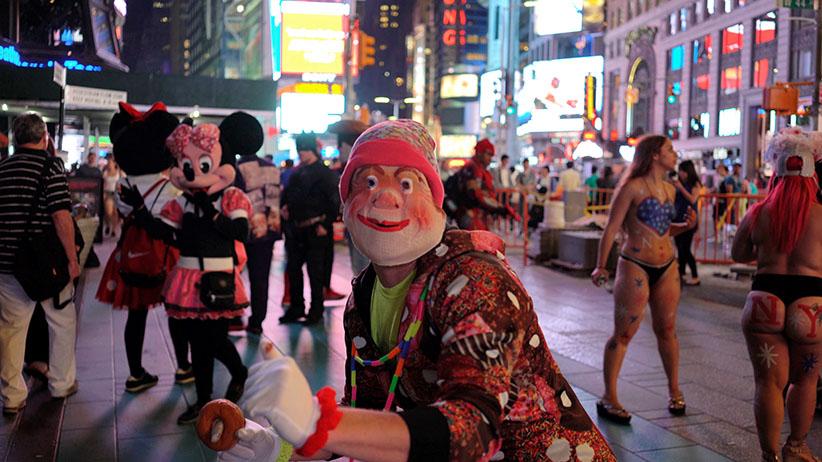
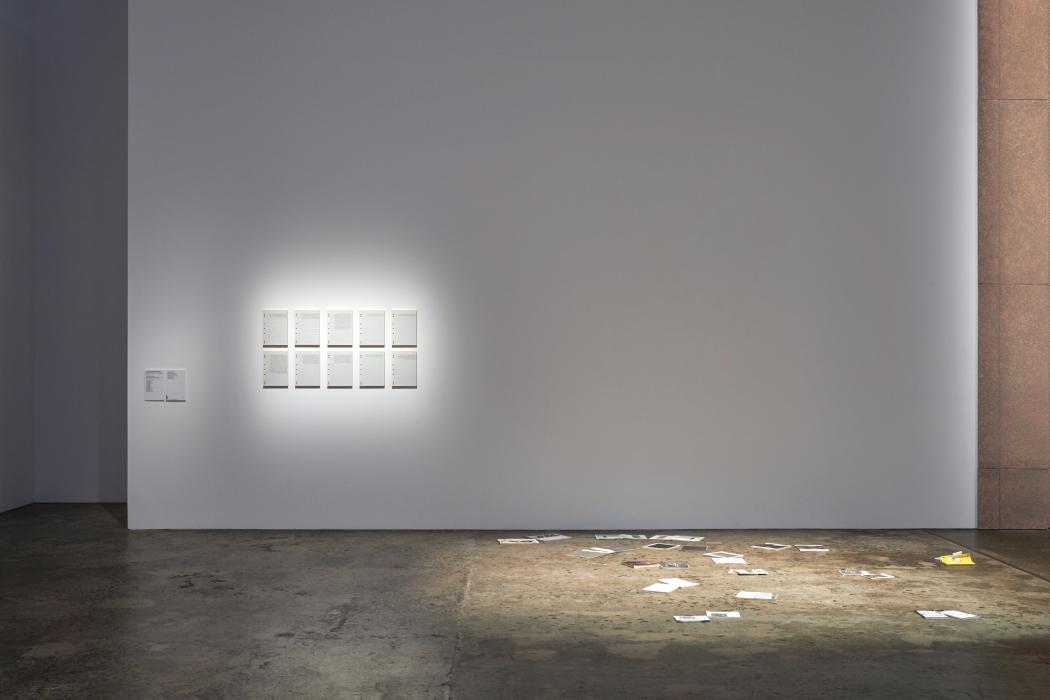
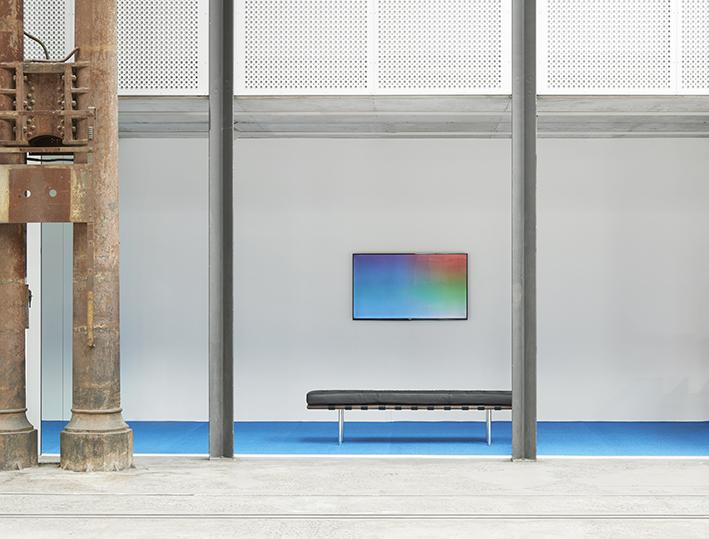
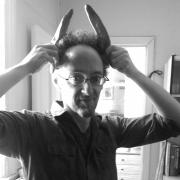
-itok=ribiFMDO.jpg)
